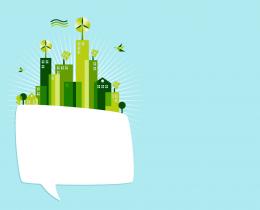Jeremy Rifkin, founder and president of the Foundation on Economic Trends, is one of the world’s leading authorities on economic sustainability. In this thought-provoking five-part series, he explains how we are already transitioning into a post-carbon era and on the verge of creating a sustainable economic paradigm that will usher in the Collaborative Age.
The Third Industrial Revolution will be the last of the great Industrial Revolutions and will lay the foundational infrastructure for an emerging collaborative age. Its completion will signal the end of a two-hundred-year commercial saga characterized by industrious thinking, entrepreneurial markets, and mass labor workforces and the beginning of a new era marked by collaborative behavior, social networks and professional and technical workforces.
In the coming half century, the conventional, centralized business operations of the First and Second Industrial Revolutions will increasingly be subsumed by the distributed business practices of the Third Industrial Revolution; and the traditional, hierarchical organization of economic and political power will give way to lateral power organized nodally across society.
Lateral power is a new force in the world. Steve Jobs and other innovators of his generation took us from expensive centralized mainframe computers, owned and controlled by a handful of global companies, to cheap desktop computers and cell phones, allowing billions of people to connect with one another in peer-to-peer networks in the social spaces of the Internet. The democratization of communications has enabled nearly one third of the human population on Earth to share music, knowledge, news, and social life on an open playing field, marking one of the great evolutionary advances in the history of our species.
But as impressive as this accomplishment is, it is only half of the story. The new green energy industries are improving performance and reducing costs at an accelerating rate. And just as the generation and distribution of information is becoming nearly free, renewable energies will be also. The sun, wind, biomass, geothermal heat and hydropower are available to everyone and, like information, are never used up.
When Internet communications manage green energy, every human being on earth becomes his or her own source of power, both literally and figuratively. Billions of human beings sharing their renewable energy laterally on a continental green electricity internet creates the foundation for the democratization of the global economy and a more just society.
The distributed nature of renewable energies necessitates collaborative rather than hierarchical command and control mechanisms. This new lateral energy regime establishes the organizational model for the countless economic activities that multiply from it.
To read more from this five-part series, continue to A Sustainable Economic Future: Part 2: Capitalism in the Future.
The Third Industrial Revolution: A 5-Part Series on a Sustainable Economic Future
Part 1: Welcome to the Collaborative Age
Part 2: Capitalism in the Future
Part 3: Manufacturing in the Post-Carbon Era
Part 4: Marketing in the 21st Century
Part 5: Jobs in the Collaborative Age



